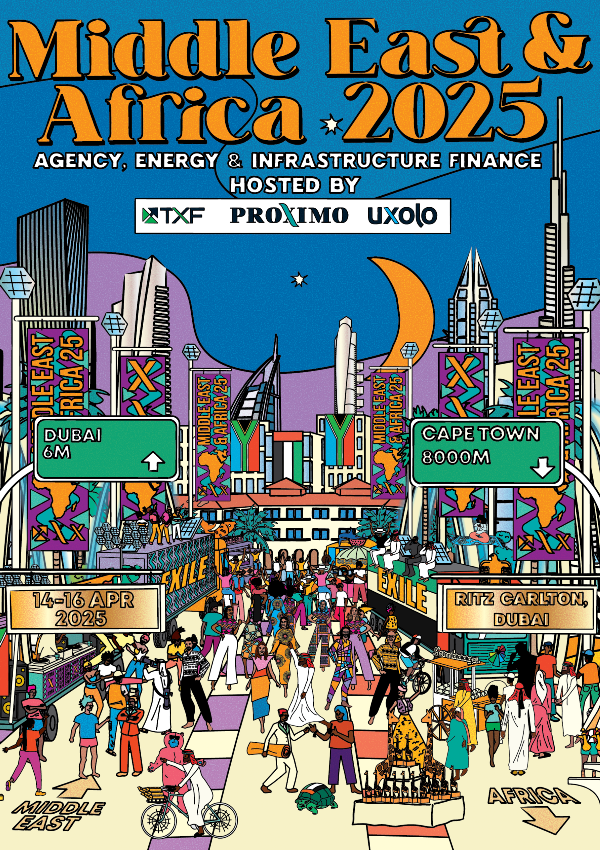Top takeaways from TXF Global 2018
From modernising the OECD consensus, creating an international exporters' forum to linking deal margin grids to borrowers sustainable development goals, there were a number of exciting takeaways from two days of forward thinking debate at TXF Global in Prague last week.

1) OECD guidelines and local content rules continue to be a big challenge, especially for large projects in developing countries with multiple components originating from different countries. This leaves EU EPC companies installing solar equipment struggling to meet the requirements of today’s market and the OECD consensus in need of modernisation.
This could also be a factor in the progress the International Working Group is making behind the scenes in terms of international consensus-building, making it a ‘one to watch’ moving forward.
2) Exporters are increasingly enthusiastic about creating an international exporters’ forum or union, similarly to the Berne Union for ECAs. This would allow them to pool their resources and advocate for change, including tackling what some perceive to be an un-level playing field internationally.
3) There is a desire among exporters for European governments to start providing development aid to complement ECA financing for large projects. Such aid would open up a whole new European supply chain and would enable exporters to win Operation + Maintenance (O+M) contracts off the back of such financings. The Chinese government are already doing this successfully, and at times because of such aid, local content isn't even a feature of their contracts.
4) There is a growing interest from borrowers in Chinese ECA and DFI backing – not just because of cheap debt but because Chinese technology is improving very rapidly and in the next five years may represent a viable alternative for high-tech projects in the major project sectors (cf. Huawei in phones market). Furthermore, Chinese contractors and investors promise to fund development quickly, minus the intrusive and long-winded due diligence processes, and more often than not, build associated infrastructure contributing to the surrounding area.
5) There were concerns about the track record of ECAs with guarantees and loans for projects and buyers credits of $100 million and under. Borrowers in emerging markets complained of a lack of communication, extremely lengthy ECA due diligence processes, and even the loss of contracts because of ECA sluggishness. This meant that unforeseen costs began to add up, for example some had been forced to take out expensive bridge loans to get projects moving while the ECAs held up schemes.
Others had to pay penalty clauses because ECAs had forced them to break date-certain EPC contracts. Moreover, some had even lost contracts and contracted penalties because of a breach of contract - a result they claim was caused again by incredibly lengthy ECA due diligence.
The biggest frustration vented by borrowers was that while it could be acceptable for this to happen the first time they worked with an ECA, in some cases even with a spotless track record with them, the process appears to start from scratch every time.
6) ECAs are getting better at understanding the needs of SME exporters and there is an optimistic product development pipeline that could make a significant difference in terms of the ease and cost of financing transactions for this market segment. However, progress remains slow while the need continues to escalate. Harnessing the power of digitisation is one tool in a broader toolkit that could help to accelerate this progress.
7) Construction risk is still a major turn-off for institutional lenders and investors. The cost of breaking swap costs also often makes bond refinancing of anything other than developed market projects post-construction too expensive for the borrower. Essentially, the whole market needs to find a way of making it easier for borrowers to tap alternative sources of lending in the project and export finance space.
8) The PRI industry is robust. Looking at 2017, the industry took huge hits with hurricanes and forest fires; many of the leading trade insurers were the ones that bore the brunt of that cost – but, crucially, without passing it onto its customers in the export finance industry, which reflects well on the product.
9) If the viable worldwide infrastructure gap does indeed run into trillions of dollars – as claimed by various DFIs – then the question to be asked is why there are so few bankable projects in the market. Either the gap is not the size claimed, or what constitutes bankability is primarily a risk-free loan guaranteed by a third party. In short - what do banks actually mean by bankability these days? And how can the gulf between that meaning and the global infrastructure need actually be plugged?
10) The end of Chinese solar subsidies may be a huge bonus in the short term for global developers as solar panel costs plummet again. The lower costs may also offset some of the tariffs raised by Trump in the US, giving US solar developers a boost.
11) Sustainable Development Goals (SDGs) can play a meaningful role in export and project finance, but at the moment they feature more heavily as rhetoric than reality. In order to truly sharpen their impact, the market has to see more deals where margins are tied to SDGs, so that borrowers have a real incentive in meeting them.
12) The Sergipe local currency bond may have put local currency financing back on the radar for many – with audience interest piqued by some of the claims made about the deal. But, without any real indication of pricing announced, the general consensus is that cost might mean it is only be repeatable in a particular set of economic circumstances. Nonetheless, it demonstrates that real solutions exist in the right conditions, so long as players are willing to accept the complexity and cost.





